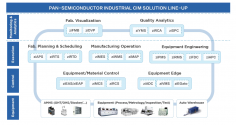You are using an out of date browser. It may not display this or other websites correctly.
You should upgrade or use an alternative browser.
You should upgrade or use an alternative browser.
Chinese semiconductor industry
- Thread starter Hendrik_2000
- Start date
- Status
- Not open for further replies.
So probably built a fleet of these prototypes underground secret facilities already
No.
The thread is rather long, but please have a look at the last six months of posts before randomly posting articles and making exaggerated interpretations of them, especially as you are a new member here.
Does the LPP have the same potential as state of the art EUV in the West, or for that we will be waiting for the SSMB?
Because if LPP has the same potential I don't know why everyone is talking about SSMB at such early stages.
Because if LPP has the same potential I don't know why everyone is talking about SSMB at such early stages.
I have to wonder if other players (outside of Samsung) are moving to GAA for their own 3nm nodes instead of staying with FinFet. While no doubt TSMC's process will be refined over time, I want to ask if its current struggles would affect that of other foundries and IDMs when making the decision on when to make the switch.Many industry experts claim the overheat issue is due to TSMC 3nm using FinFet processes.
Samsung 3nm is using GAA but Samsung has a very bad reputable for reliability. As for TSMC, its 2nm chip is also moving to GAA.I have to wonder if other players (outside of Samsung) are moving to GAA for their own 3nm nodes instead of staying with FinFet. While no doubt TSMC's process will be refined over time, I want to ask if its current struggles would affect that of other foundries and IDMs when making the decision on when to make the switch.
Last edited:
Thing is, we don't really know. We've seen indications that Chinese institutes can at least design high-NA optical systems, but we aren't sure where they are at their fabrication. Even so, there is some leeway to catch up in that area; current 3nm processes still uses low-NA lithography, while Intel plans to stay with low-NA for their 18A process. High NA doesn't look to be that much of a concern for the major players in the semi space for the near future.Does the LPP have the same potential as state of the art EUV in the West, or for that we will be waiting for the SSMB?
Because if LPP has the same potential I don't know why everyone is talking about SSMB at such early stages.
If intel has trouble using DUV for 7nm node due to complexity, how would it be able to deliver 18 node with low NA.Thing is, we don't really know. We've seen indications that Chinese institutes can at least design high-NA optical systems, but we aren't sure where they are at their fabrication. Even so, there is some leeway to catch up in that area; current 3nm processes still uses low-NA lithography, while Intel plans to stay with low-NA for their 18A process. High NA doesn't look to be that much of a concern for the major players in the semi space for the near future.
- Status
- Not open for further replies.

